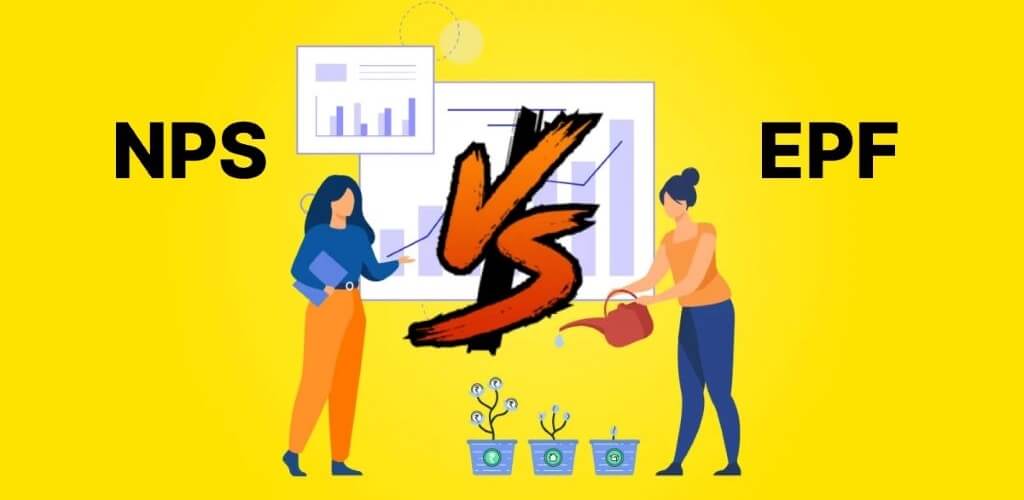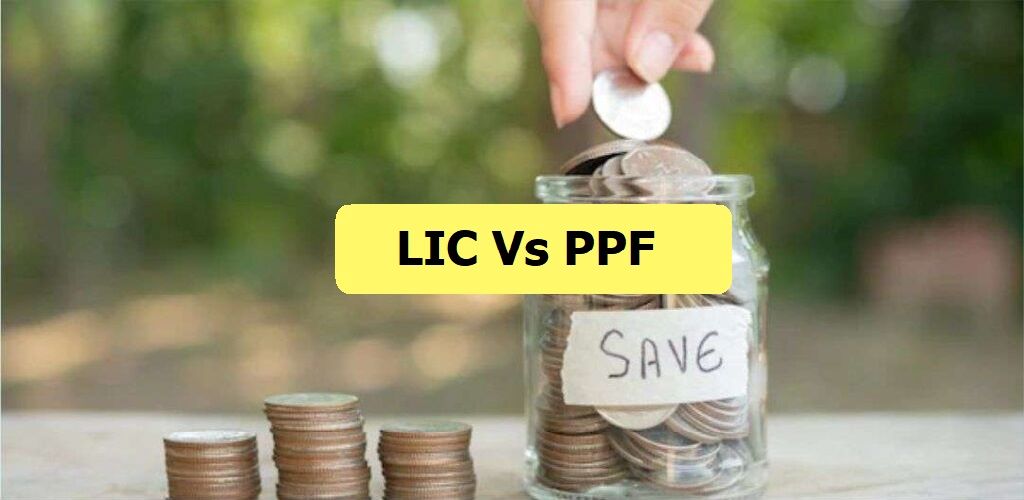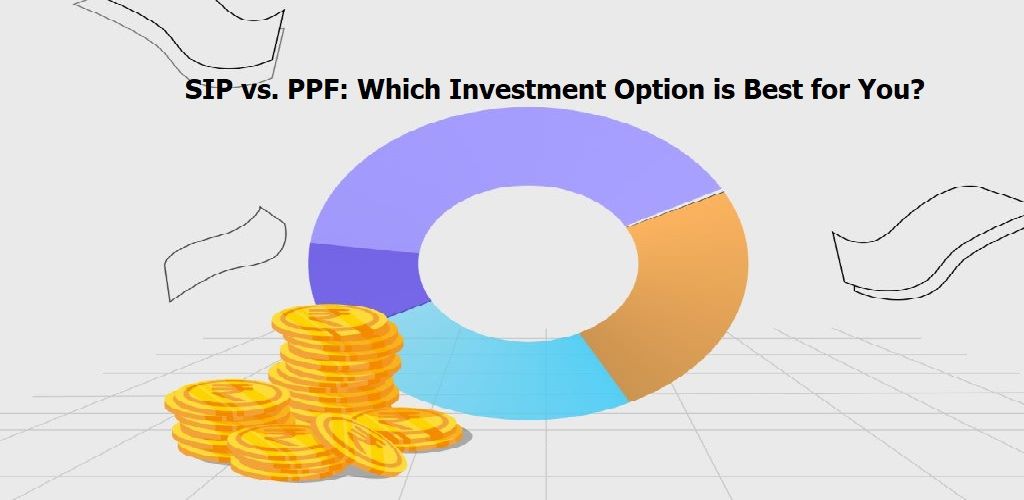Irrespective of your current goals, “Retirement” stands as an important consideration in the life of every individual to safeguard their future. In India, the best thing about retirement planning is that there are abundant plans offered by the Government to organise savings and investment psychology within the minds of salaried individuals. Though there are multiple plans, the Employee Provident Fund (EPF) and National Pension Scheme (NPS) are two of the popular options that gained their market reputation.
When it comes to choosing one, it’s important to dive into a complete understanding of each plan so that investors can make the right choice and build a profitable portfolio.
Ready to invest? If so, this blog post will provide you with the required insights to differentiate and select the right retirement plan customised to your needs.
What is NPS?
Launched by the Pension Fund Regulatory & Development Authority (PFRDA), NPS is a government-backed scheme that is designed to provide maximum financial security during the old age of an individual. Just like a mutual fund, the contributions made under the National Pension Scheme are invested in a multitude of market-linked instruments, including corporate bonds, equities, and government securities, based on the risk tolerance of the subscriber.
Note: The definitive returns of the pension scheme are dependent on the performance of the market and thus, they are not fixed.
When it comes down to eligibility, the pension scheme is now eligible for all salaried individuals. Previously, only the central Government employees were covered by the NPS. But after January 1st, 2004, the scheme is now available to all Indians who are working and can make investments. No matter whether you working in the public sector, private, unorganised sector, or simply running your own business, anybody can invest in NPS as per their risk tolerance and returns.
The best thing about the scheme is that individuals can deposit money every month. A minimum of Rs. 500 for Tier 1 and a minimum of Rs. 1000 for Tier 2 accounts can be invested by an individual. Upon retirement, investors will receive a monthly pension.
Understanding EPF
Managed by the Employees’ Provident Fund Organization (EPFO), EPF is a government-backed scheme that provides financial security to employees during their golden years of retirement. Since it is administered by the “Government of India”, the scheme is designed for salaried individuals so that their retirement needs can be fulfilled without any difficulty.
The best thing about the scheme is that both employees and employers can make monthly contributions to the same EPF account. With this savings-cum-investment scheme, investors have the flexibility to withdraw the entire amount which includes the principal amount along with the interest earned to meet their post-retirement objectives.
What are the Salient Features & Benefits of NPS?
The features and benefits of NPS are listed below.
- Maximise Return Potential
One of the first and foremost benefits of enrolling in the National Pension Scheme is that it provides returns that surpass traditional tax-saving instruments like PPF. With the NPS scheme, investors have the potential to earn annualised returns ranging from 8% to 10%. It is important to note that NPS returns are not fixed; they fluctuate based on the performance of the funds within the scheme, as the returns are based on the performance of the market.
- Tax Benefits
Another major advantage of investing in NPS is that you are eligible for deductions of Rs. 1.5 lakhs. It comes with two tax benefit options, namely Section 80CCD (1) and Section 80CCD (2). Under the first one, the deductions are allowed for the amount contributed by the investor while the second one covers the contributions made by the employers. The maximum deduction allowed under 80CCD (1) is 10% of the individual’s salary while the second option doesn’t come under the category of Section 80CC.
- Tiered Structure
Since the NPS programme offers Tier 1 and Tier 2 accounts, investors have the flexibility to opt for one that aligns with their investment needs. Under the first Tier, withdrawals from this account are generally restricted which aligns with long-term retirement goals. On the other hand, Tier 2 enables more flexible withdrawals without tax benefits.
- Regular Income During Retirement
No matter what your retirement goals are, everybody wants a regular income during their golden years of retirement. With the scheme, investors have the flexibility to use the entire amount to get a consistent income after their retirements and meet their financial needs without asking anyone for help.
- Multiple Pension Funds
Subscribers can choose from different pension fund managers and investment options, including equity, corporate bonds, government insecurities, and alternative assets. This enables diversification and customization of the portfolio based on risk tolerance and return expectations.
What Distinguishing Features & Benefits Does EPF Offer?
If you are confused about whether you should opt for EPF, then these listed benefits will make you think twice.
- Quick EPF Loans
One of the key features and benefits of choosing an EPF scheme is that it offers flexibility to working individuals to get loans against their EPF account balance. Remember one thing you must need to repay the loan within 3 years from the date you have taken your loan. Speaking of the interest, it is imposed at a very minimal rate of 1% per annum so that there won’t be any burden on the individual.
- Insurance Without Hassle
The key benefit of choosing the EPF Scheme is that it offers Employees Deposit Linked Insurance (EDLI) to the employees without allowing them to dive into a bunch of paperwork or pay higher prices. The scheme offered by EPFO offers death cover without any insurance premium obligation. As of now, the maximum insurance benefit offered by the EPF scheme stands at Rs. 7 lakhs.
- Home Loan
Another important feature and benefit of considering the scheme is that it provides the benefit of borrowing home loans so that employees can make their dreams come true. According to the new rules set by the EPFO, individuals have the flexibility to withdraw up to 90% of their EPF balance to purchase or construct a new home.
- Attractive Pension Benefits
This retirement-backed scheme allows the EPF holder to be eligible for pension benefits. But there’s a note that every individual must adhere to. If an employee wants to get a pension amount during their golden years of retirement, then they should invest consistently in their EPF account for a minimum of 15 years.
- Exclude from TDS
Last but not least, an employee’s contributions to the Employee Provident Fund (EPF) are exempted from taxation. But here’s the catch! If the amount goes beyond Rs. 7.5 Lakhs per year, then the contributions made by the employee will be taxable.
Key Differences Between NPS & EPF
Let’s take a look at the key differences between NPS & EPF based on the following parameters.
| Parameters | NPS | EPF |
| Minimum Investment Required | The investment required is Rs. 6000 per annum for the Tier 1 account of the NPS scheme. | On the other hand, the investment required is 12% of the basic salary + dearness allowance. |
| Flexibility | With NPS, you will have control over how your funds are distributed to invest in a wide range of assets. | Under the EPF scheme, you will have no control over how your funds are allocated. |
| Risk Level | This kind of investment is market-linked. It won’t be wrong to say that there is some risk associated. | The EPF scheme is government-backed. It can be said that it is quite safer than NPS. |
| Return on Investment | When it comes to return on investment, returns are dependent on the equity allocation of funds. | On the flip side, the returns are guaranteed and fixed. |
| Taxability | There is a contribution of Rs. 1.5 lakhs and an additional contribution of Rs. 50,000 are tax exempted. | On the other hand, EPF contributions of up to Rs.1 1.5 lakhs are tax-free. |
| Maturity Period | The maturity period is 60 years (which can be extended) | EPF, on the other hand, has a maturity period until retirement. |
Which One is Better: NPS OR EPF?
There is no denying that both NPS & EPF are excellent retirement plans to consider. Though you can invest in both, choosing one could be beneficial for those who have budget limitations. If you’re looking for steady returns, then investing in EPF is an ideal choice for you because it is not linked to the market’s performance but the returns are not higher. But, on the other hand, NPS provides a higher return to meet the needs of an individual during the golden years of their retirement. Analyse your risk tolerance and make an informed decision today!







